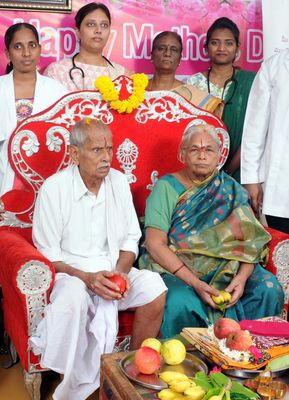On September 5, Erramatti Mangayamma, 74, and her husband Raja Rao, 80, became the world's oldest parents. Mangayamma had twin girls at the Ahalya Nursing Home in Guntur, Andhra Pradesh, following in-vitro fertilisation (IVF) treatment.
While it brought joy to the parents, the news perplexed many medical professionals—they wondered why IVF was administered to such an elderly couple. Many others asked: “What will become of the children in the future?” The Union government is all set to introduce the Assisted Reproduction Technology (Regulation) Bill in the next Parliament session. The bill proposes a 50-year age limit for women seeking IVF to get pregnant.
It is estimated that one in six Indian couples is infertile. Factors like low sperm count, infections and erectile dysfunction in males, and damaged fallopian tubes, ovulation disorders, endometriosis (a disorder in which tissue that normally lines the uterus grows outside the uterus) and problems in menstrual cycle in females are the main causes of infertility. Lifestyle changes also adversely affect fertility. In-vitro fertilisation is the most common and effective type of assisted reproductive technology used to treat infertility. IVF is a process in which the ovum (female reproductive cell) is combined with a man's sperm cells outside the body, and the fertilised egg is then implanted in the uterus.
The IVF procedure starts with a hormonal treatment to stimulate egg production in the woman. Multiple eggs collected from the ovaries are then mixed with the sperm cells in a culture dish to facilitate fertilisation. The embryos (fertilised eggs) formed are kept in incubators for two days and are transferred back to the ovary for normal growth.
More than eight million births have been recorded via IVF process since the world's first in 1978. A recent study by Centre for Reproductive and Genetic Health, London, showed that clinical pregnancy rate declines with maternal age over 35 years—from 51.1 per cent for under-35s to 21.7 for over-40s. The study, which was based on 4,833 IVF cycles between 2009 and 2018, found that pregnancy rate declines with increasing paternal age, too—from 49.9 per cent in the under 35 group to 30.5 per cent in the over 51s. There has been no comprehensive study on the success rate of IVF in India.
Louise Brown, born on July 25, 1978, in Oldham, England, is the first baby to be conceived through IVF. English physiologist Robert Edwards and gynaecologist Patrick Steptoe pioneered the conception through IVF. The second ‘test tube’ baby, Durga aka Kanupriya Agarwal, was born in India on October 3, 1978—just 67 days after Louise was born. But her creator Dr Subhash Mukhopadhyay did not get recognition. The government did not allow him to share his achievements with the world. In 1981, he committed suicide in Kolkata. The physician’s work was finally recognised in 2002 by the Indian Council of Medical Research.


